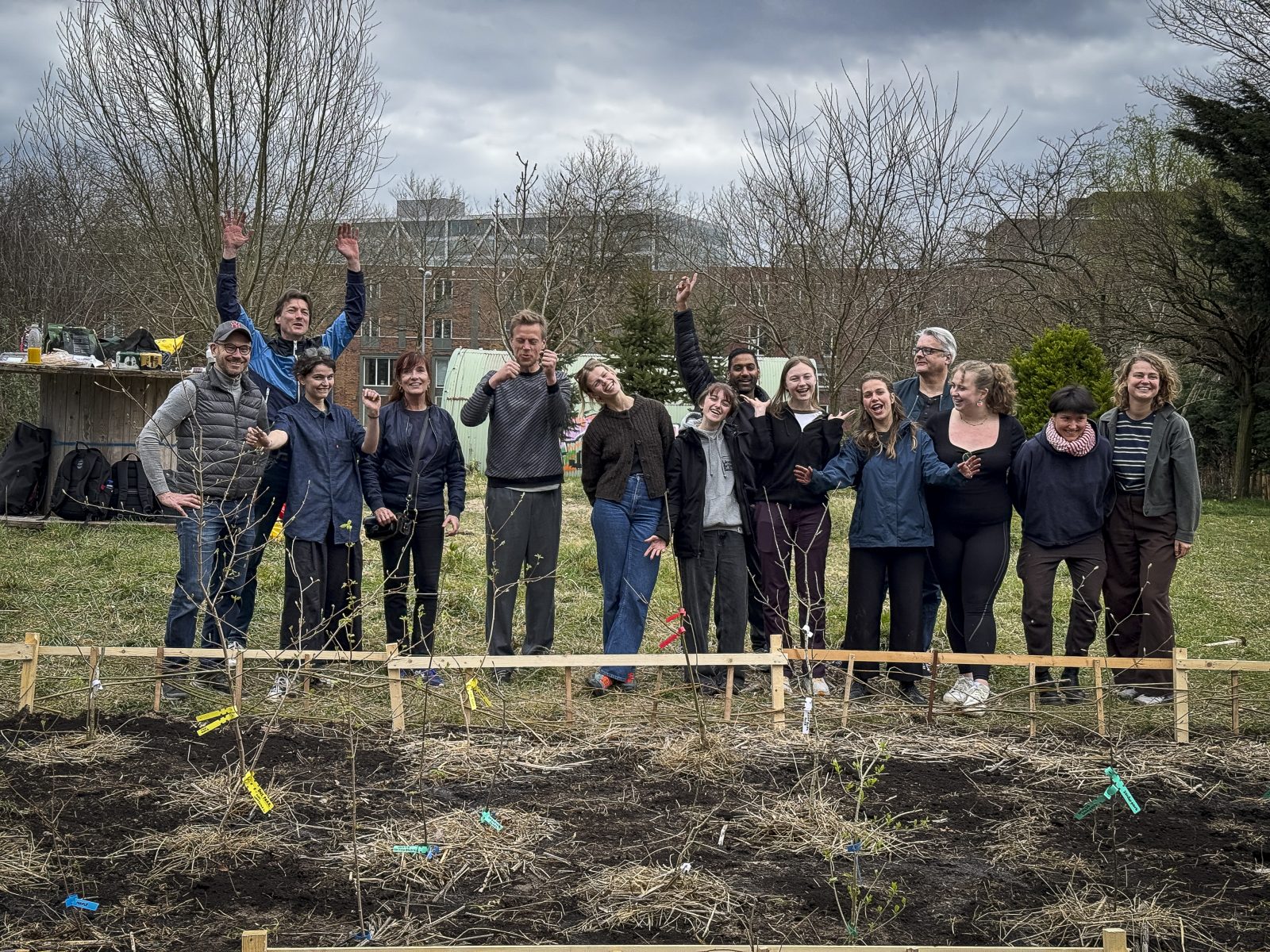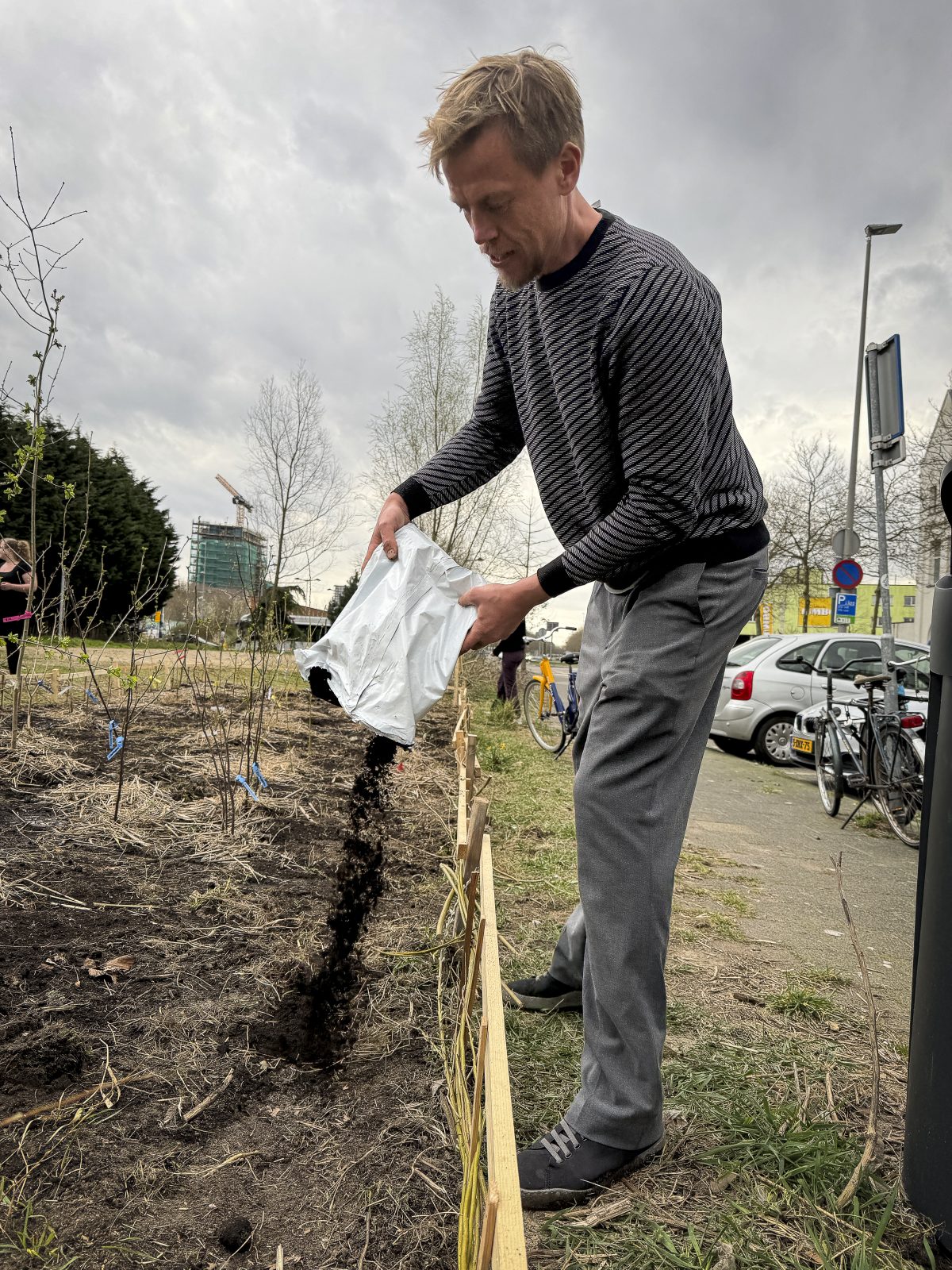Into the Woods
A hands-on studio that explored strategies for radically greening our cities by creating a micro forest, led by Peter Veenstra (LOLA Landscape Architects) and ecologist Ronald Buiting. Fri 14, Sat 15, Fri 21 and Sat 22 March 2025.

Course outline
Planting trees has become a popular initiative for local and national governments around the world to combat climate change and increase biodiversity. In 2020, The World Economic Forum launched the One Trillion Trees Initiative - a global movement to grow, restore, and conserve trees across the planet. Similarly, the European Commission aims to plant at least 3 billion additional trees by 2030, and the Dutch government developed a vision for the future of forests in the Netherlands, targeting a 10% expansion by 2030.
While expanding, regenerating, and rewilding large natural areas are crucial strategies for creating diverse and healthy carbon-storing ecosystems, there are also many reasons to radically green our urban areas. Trees capture CO2 and clean the air, cool our cities, help regulate ecosystems, improve our health, and foster a sense of well-being.
In this workshop, we worked together with Peter Veenstra and with 11 participants on creating our own micro forest in the neighbourhood-run Hefpark on Rotterdam South. Inspired by various lectures and excursions with landscape architects and biodiversity experts, we employed a layered approach from the soil to the treetops, with a specific focus on the biodiversity of what we are planting.
Here's a report by Laura Thomas, one of the participants:
“Team Theory” ambitiously started by researching the Potential Natural Vegetation (PNV) of our plot, as explained by ecologist Ronald Buiting Advies BV: looking for oak, beech, and birch babies. Because there’s little room in the city for spontaneous vegetation, finding the right seedlings was a challenge. Many public green spaces are maintained in such a way that seedlings hardly get the chance to grow. But in a few spots in the city, we were able to dig some up.
Back at our site, we experimented with ways to make the soil more suitable for trees. First, we removed the compact topsoil layer of 20–30 cm until we reached the underlying sand layer. On top of that, we added a layer of decaying tree trunks and branches to nourish the soil and improve its moisture-retention capacity. We mixed this with pruning waste. Then we added a layer of compost from the community garden, followed by a mixture of the dug-up topsoil with added biochar (charred organic material used to improve soil structure, increase water and nutrient retention, and sequester carbon). Finally, the roots of the seedlings got a bath in a mycorrhiza mix. In natural conditions, the soil is full of these fungi. Without mycorrhiza, plants don’t receive the right or enough nutrients. So we also need to change how we garden to avoid killing these fungi.
The result is a 40 m² plot with 50 young seedlings, in the hope that they will grow into mature trees and shrubs. The residents of Hefpark are certainly on board: as soon as we put a shovel in the ground, they came over to help. And even now that planting is complete, Ali is helping us make sure the young trees are carefully watered.
About Peter Veenstra
Peter Veenstra is landscape architect and co-founder of LOLA Landscape Architects (Rotterdam, Shenzhen). With the office Peter worked on projects like Park Vijversburg in Tytsjerk, Singelpark in Leiden, the adidas HQ campus in Herzogenaurach, and the Red Path Park in Shenzhen. Recent research focused on post-disaster landscapes, carbon positive land use, afforestation, and climate adaptation in the urban environment. In 2013, he received the Rotterdam Maaskant Prize for Young Architects, in 2014 the TOPOS landscape award. He co-wrote LOLA’s first monograph, ‘Lost Landscapes’, and the second, ‘In Search of Sharawadgi’. On 2022, he co-curated the International Architecture Biennale Rotterdam, titled ‘It’s About Time – The Architecture of Change’.
About Ronald Buiting
Ronald Buiting is an ecologist specialised in biodiversity in the green outdoor space. His office uses field and open source data research to plan development and process guidance. He specialises in the establishment of new habitats and the biodiverse design of landscapes, forests and buildings, working with offices such as Dok Architecten, MVRDV and Posad Maxwan. Ronald is an expert in turning problems in opportunities and creating support and ambassadorship to sustainably manage habitats.
Schedule
Friday 14 March 2025
10:00 – 12:30 Welcome and Introduction Lectures by Peter Veenstra (LOLA) and Carolien van Eykelen (Municipality Rotterdam)
12:30 – 13:30 Lunch Break
13:30 – 17:30 Ground work at Hefpark
Saturday 15 March 2025
10:00 - 17:00 Presentation and excursion to Bentwoud (Zoetermeer) with ecologist Ronald Buiting
Friday 21 March 2025
10:00 – 17:30 Work at Hefpark
Saturday 22 March 2025
10:00 – 17:30 Harvesting and planting of seedlings at Hefpark - digging, planting, painting, naming, etc.


